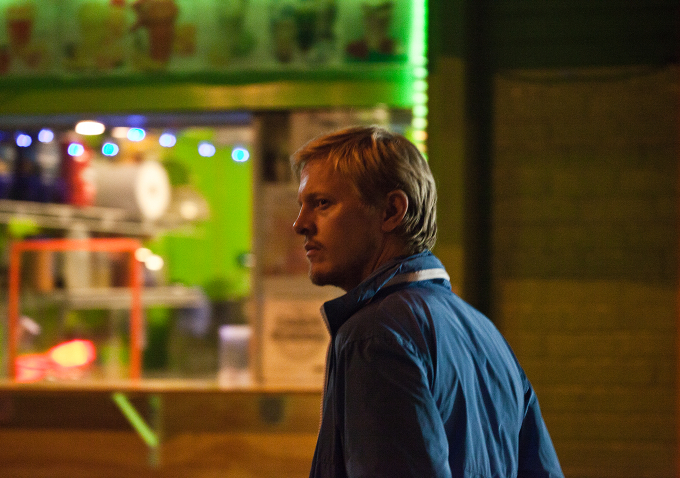 With "Keep the Lights On," co-writer/director Ira Sachs has made a triumphant return to Sundance. His latest drama is a beautiful exploration of a relationship’s progression from start to finish. With great tact and depth of feeling, Sachs shows us that the most remarkable thing about any relationship is not the beginning or end but rather the maintenance of what could only unfairly be called a dysfunctional couple. Unlike Sachs’s Sundance Grand Jury Prize-winning "Forty Shades of Blue," which focuses on a singular moment in a marriage’s disintegration, "Keep the Lights On" follows a couple as they struggle to stay together.
With "Keep the Lights On," co-writer/director Ira Sachs has made a triumphant return to Sundance. His latest drama is a beautiful exploration of a relationship’s progression from start to finish. With great tact and depth of feeling, Sachs shows us that the most remarkable thing about any relationship is not the beginning or end but rather the maintenance of what could only unfairly be called a dysfunctional couple. Unlike Sachs’s Sundance Grand Jury Prize-winning "Forty Shades of Blue," which focuses on a singular moment in a marriage’s disintegration, "Keep the Lights On" follows a couple as they struggle to stay together.
Sachs pulls no punches and, with the exception of one weak scene, never over-emphasizes a single moment as the definitive make-or-break point for his main couple. Every moment is poignant and significant in some way, even the small ones. It’s that sense of potential, both for loss and for a strengthening of the bond that unites two New Yorkers over the course of a decade, that makes "Keep the Lights On" an especially accomplished film.
The film begins with a scene of sexual frustration: Erik (Thure Lindhart), a documentary filmmaker, calls a number of men in an attempt to find somebody he can quickly hook up with. He finds a man only to later discover that the encounter is not what he had in mind. Erik subsequently meets other men until he stumbles upon Paul (Zachary Booth), a young lawyer. Erik and Paul share an instant connection and Lindhart and Booth clearly have chemistry that Sachs brought to another level. He maturely presents each emotional convolution that Erik and Paul’s relationship takes on with a steady, sober hand and never distractingly over-enunciates the mannerisms or emotional distress of his characters.
For example, Paul’s drug problem is gracefully introduced during Erik and Paul’s first encounter. Sachs never over-simplifies Paul’s addiction by sensationalizing either its dangers or its potential appeal. Both Sachs and co-writer Mauricio Zacharias draw attention to the potential dangers of Paul’s habit in the handful of scenes where he’s shown to be missing after taking drugs. Similarly, the feelings of panic and frustration that overwhelm Erik never make him seem like a histrionic caricature. His concern is an implicit sign of the negative side effects of crack use. And yet, Sachs also makes sure to show characters slowly exhaling smoke from crack pipes, though never with hyper-real romanticism. These scenes of smoke emerging from glass pipes is Sachs’s quiet way of acknowledging that yes, drugs are potentially comforting and appealing, too.
That even-handedness is a good part of why "Keep the Lights On" is as stunning as it is. It’s about history, a dramatized document of a life that two people shared together on-and-off over ten years. Every scene is a part of a greater whole and hence no part really stands out more than the rest, save perhaps for one unusually clumsy scene where Erik tries to show Paul that he wants to support him by holding Paul’s hand while he has sex with another man.
The sequential progression of the story in the film is more important than any singular moment. In a way, that concept is underscored by the way that Sachs got the late musician Arthur Russell to score the film and also made real-life artist Avery Willard the subject of Erik’s latest documentary. Both men are queer icons, so by including them so prominently in "Keep the Lights On," Sachs shows just how seriously he takes the idea of maintaining continuity and a sense of historical perspective.
Russell’s sensuous score in particular subtlely brings out that theme in his lyrics, singing about how loving comes as easily to him as breathing. That’s the sensation you get watching "Keep the Lights On." Sachs and Zacharias don’t judge their characters or the flawed decisions that they often make. They present events from an emotionally generous perspective: we must remember our weaker moments with the same love and acceptance that we use to cherish our better ones. There’s no melodrama here, just a moving and totally engrossing story of two men in love. [A]

